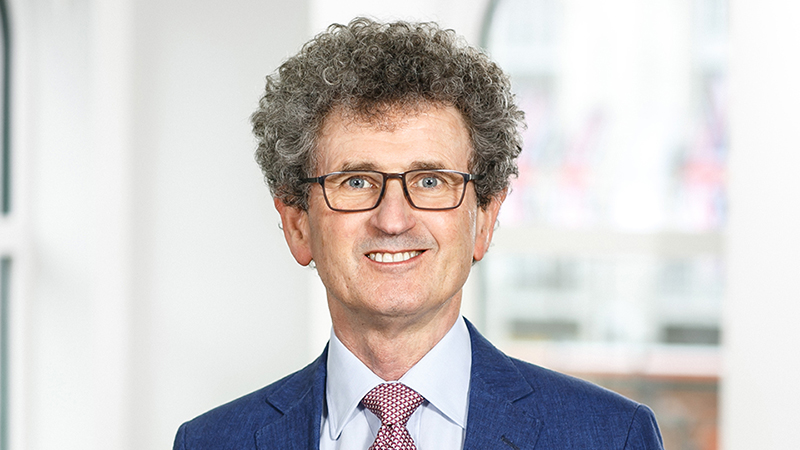The Gold Report: Low interest rates, a cornerstone of recent modern Western economic policy, have proven positive for gold over the last several years. What do you see as the three primary price drivers for gold this year?
Rob Cohen: The primary price driver is global liquidity. That is fed by balance-sheet expansion in many Western countries and foreign exchange reserves, typically the result of trade deficits built up in countries such as China.
Number two is real interest rates. The Federal Reserve could tighten rates, but we don't know where inflation will be. Negative real rates are very good for gold. Mildly positive real rates are not harmful for gold. Positive real rates above 2% can stall the gold price.
Number three is geopolitical crisis. Strife can get priced in and out of the gold price.
We also believe that gold should maintain its purchasing power to oil. Over the last 40 years one ounce of gold typically bought 15 barrels of West Texas Intermediate oil. That ratio has been knocked down to about 13:1. I would expect some reversion closer to 15:1 this year. Taking that ratio in isolation would mean that gold is underpriced by about $200/ounce ($200/oz).
In 2013, the gold price was knocked out of whack with respect to other hard assets, driven by the 900-tonne liquidation in the gold ETFs. The damage was probably a US$200/oz drop in the gold price.
We suspect that the massive amount of gold liquidated by the ETFs were driven by hedge funds and speculators. The gold ETFs have over one million investors, who for the most part have hung onto their gold holdings. It was the fast money that appears to have left and, therefore, we do not expect to see a repeat of last year from the rest of the investor base.
Between 2004 and 2012, the ETFs built up 2,600 tonnes of gold. Putting that into context, that made the ETFs the fourth-largest holder of gold behind US, Germany and the International Monetary Fund. In one year, 900 of those 2,600 tonnes were liquidated.
If a central bank the size of Germany's liquidated 900 tonnes of gold in one year, it would have made a lot more headlines. ETFs are now the sixth largest holders of gold, after the abovementioned entities and Italy and France. So far in 2014, the ETFs are back into accumulation mode, which implies that the investors are once again seeking this asset class.
TGR: Wasn't some of that 900-tonne sell-off offset by gold buying in China?
RC: It had to be mopped up somewhere and, in our view China is a natural buyer. If China is serious about making the renminbi a global reserve currency, part of the formula to get there is to build up gold reserves. The US gold reserve is about 8,300 tonnes. As far as we know, China has approximately 1,000 tonnes; hence we believe that China will need significantly more gold as a percentage of its foreign exchange reserves.
To put this into perspective, the whole gold market in a given year is about 4,300-4,400 tonnes.
Approximately 2,500 tonnes come from new mine production; the rest is aboveground stocks moving around. Central banks, no matter how aggressive, can accumulate only in the hundreds of tonnes annually. Hence it could be a multi-decade project for the Chinese to accumulate the gold it needs. The ETF liquidation last year would have been manna from heaven for China, allowing it to accumulate a few more hundred tonnes.
Jewellers also stepped in and bought gold on the pullback in price. As the Chinese middle class expands, the per-capita consumption of physical gold has increased.
2013 was an anomaly. The 900-tonne sell-off harmed the market to a large degree. Gold was due to go down last year on the back of a strong US dollar. The herd mentality took the price drop to an extreme.
This year, US employment and industrial production data are showing some cracks. That is strengthening sentiment for gold, and it's funnelling down into gold equities.
TGR: Your Dynamic Strategic Gold Class Fund, which is 57% vested in bullion, is up about 21% since January. Last year wasn't as positive. How do you pitch your gold-based funds to investors?
RC: The Strategic Gold Class Fund, founded in 2009, gives investors a mutual fund that can own up to 70% gold bullion, and hence we view this fund as being well suited for those investors looking for gold exposure, but who are less comfortable with taking on the individual equity risk.
As far as the equity portion goes, we can expand and contract that depending on our view of the gold market. If the gold equities are building strong legs, we migrate the fund into gold equities by selling bullion and converting it to equities.
Typically, the fund is 30-70% bullion, skewed to the conservative side. Today, with 57% physical gold, we're in the middle. Although the market has been strong year-to-date, we're not ready to hand over all that bullion and put it into equities just yet. We have trimmed the gold position in baby steps.
Being in Canada, we also have the option to hedge or not hedge the Canadian dollar on that physical bullion. When the Canadian dollar is rising we are likely to hedge to give investors a better return. When the Canadian dollar is weakening, we want to have more of a US dollar return. If you're naked on the hedge, you get the Canadian dollar exposure. In other words, if the Canadian dollar has fallen 10% year-to-date, even without a change in the gold price, you would see a 10% gain in the gold price in Canadian dollars.
TGR: Do you see a lot of value in gold equities right now?
RC: On a broad level, many equities are trading near fair value at current spot prices. Some are more expensive, but it's usually a case of paying up for quality. Some of the junior companies are lagging, but investors remain cautious and conservative. Sentiment has moved a lot this year, but there's still way more liquidity in the senior companies.










